
Tiny Home Regulations in Utah: The Complete Guide
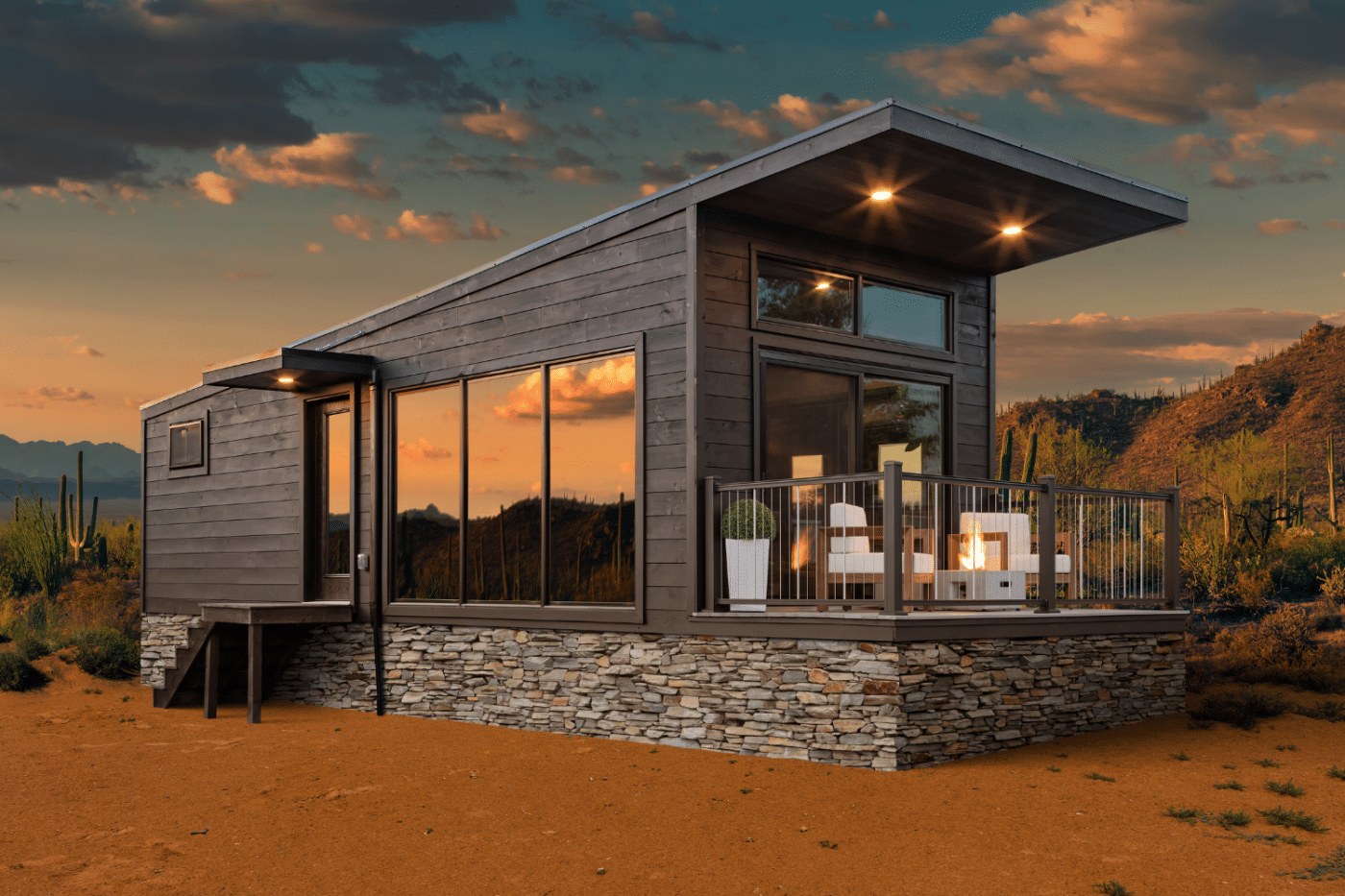
In the past few years, tiny homes have sprung up across our TV screens, on our streets, and in our daydreams. Whether you’re serious about building or owning a tiny home, curious about tiny living in general, or still daydreaming, this blog will answer all your questions about living the tiny dream in the Beehive State.
Utah is one of the best states in the country to enjoy a tiny home. Home to five National Parks, the largest concentration of natural sandstone arches, and the largest ski resort in the United States, there are many reasons to prioritize your time outside while living in Utah.
The good news for Utah tiny home enthusiasts is that tiny homes are legal across the state; however, tiny home regulations in Utah are not uniform, which could make meeting each city or county’s regulations challenging. Let’s break it all down here!
are all park models considered tiny homes?
Yes. All of the park model homes that Zook Cabins create would be considered a THOW. Our tiny homes are built to RVIA ASNI 119.5 standards. However, not all tiny homes are built to that standard. To learn more about the other common tiny home certification check out our blog RVIA VS NOAH Tiny Homes.
What Counties in Utah Allow Tiny Homes?
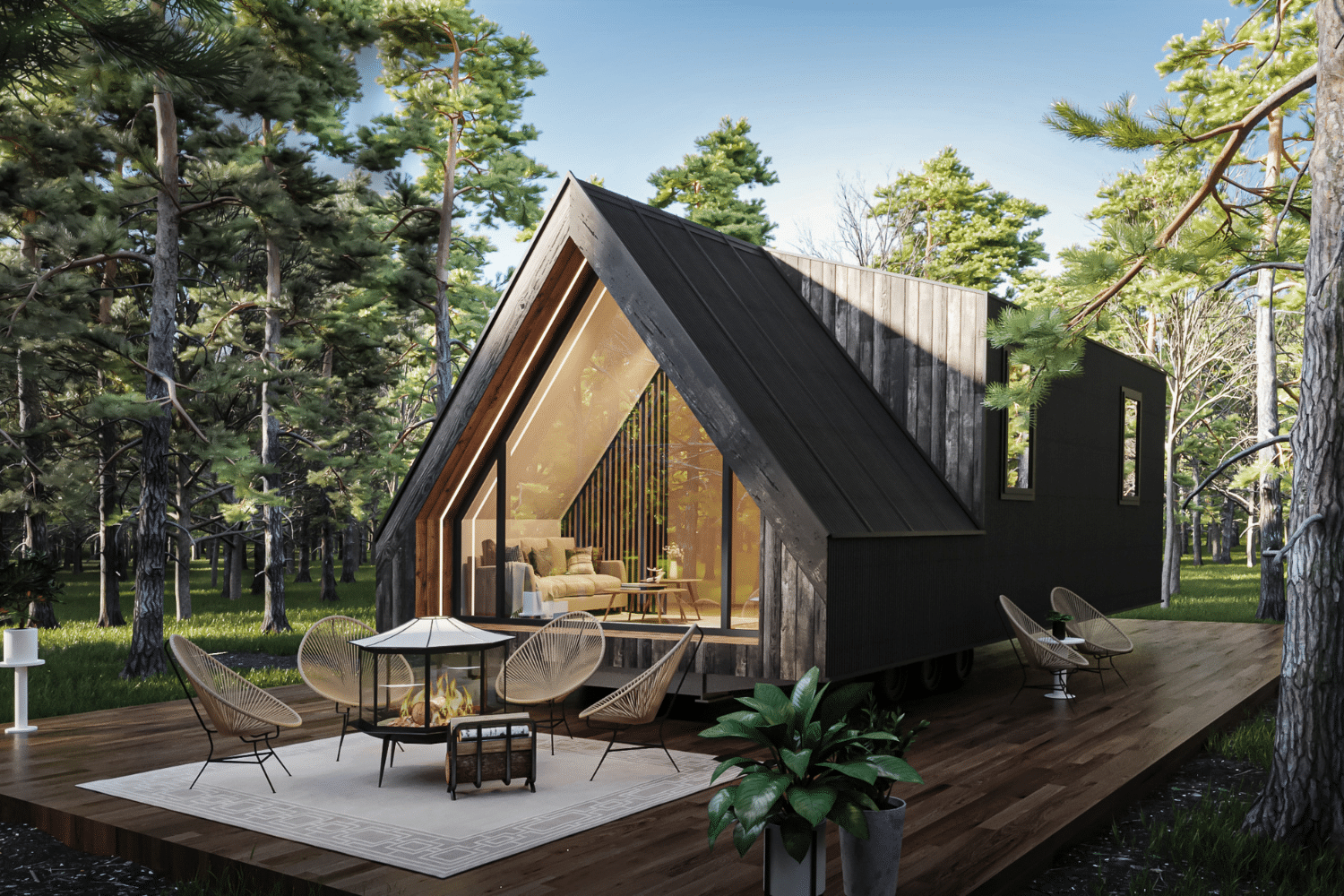
Tiny homes in Utah are allowed in some form in every county. Since there is no uniform statewide code for tiny houses, here is a list of every county’s expectations.
Always double check your specific city/town zoning ordinance as regulations vary!
Find Your Tiny Home Regulations in Utah by County
Does Beaver County, UT allow tiny homes?
Yes, tiny homes are permitted in Beaver County, Utah. A building permit is required to be submitted to the Beaver County Building Inspector. A permanent tiny home—one without wheels—must be placed on a permanent foundation and must have a minimum width of 24 ft with the width being the smallest dimension. Tiny homes on wheels or park model homes are classified as mobile homes in Beaver County and must be built in accordance with the Standards of the US Department of Housing and Urban Development and on lots zoned for single family dwellings. While Beaver County permits tiny houses, it is important to check local code and regulation to ensure compliance for your tiny home.
Does Box Elder County, UT allow tiny homes?
Yes, Box Elder County follows Utah’s general code for tiny homes, mobile homes, and accessory dwelling units. Tiny homes and park model houses are permitted in allotted mobile home subdivisions and recreational vehicle parks. Otherwise, tiny houses must be on a permanent foundation and comply with state code for single dwelling units. Residents interested in placing a tiny home in Box Elder County should consult local planning and zoning boards for the most specific building rules and zoning regulations.
Does Cache County, UT allow tiny homes?
Yes, tiny houses are legal in Cache County, Utah. Cache County, Utah follows the International Residential Code (IRC) and requires that tiny houses have a minimum area of 400 sq ft, ceiling heights of 6 ft 8 in for living areas and 6 ft 4 in for kitchens and bathrooms. There must be one full bathroom and one window designed for emergency exit use. Additionally, a ladder or stairway is required in tiny homes with a loft. For tiny home enthusiasts in Logan City, it is important to check zoning regulations as Accessory Dwelling Units, which Tiny Homes are sometimes classified as, are only permitted in certain areas of logan. Potential residents should check with local authorities for specific regulations that might apply for their home.
Does Carbon County, UT allow tiny homes?
Yes, tiny homes are allowed in Carbon County, Utah provided they meet the statewide International Residential Code (IRC) for permanent structures or meet mobile home specifications and recreational vehicle standards. Permits are required for all homes constructed on private lots in Carbon County. Be sure to check your individual city of town’s building requirements.
Does Daggett County, UT allow tiny homes?
Yes, Daggett County, Utah does permit tiny homes. Daggett County code very clearly states that a permit is required for all building and placing of tiny homes, mobile homes, and accessory dwelling units (ADUs). Tiny houses are allowed only when placed in a licensed mobile home park or on a lot that complies with all regulations regarding residential utilities such as water supply, sewage disposal, appropriate foundation, and draining. For complete regulations, contact local zoning departments.
Does Davis County, UT allow tiny homes?
Yes, Davis County, Utah follows the statewide guidance established by the International Residential Code (IRC). Building permits are required for all housing installations, tiny or otherwise. In Davis County, Syracuse City has a minimum 400 sq ft total floor area rule. Be sure to read both the city and county code in depth to ensure your tiny home meets all applicable requirements.
Does Duchesne County, UT allow tiny homes?
Yes, Duchesne County in Utah allows tiny houses. Duchesne County follows the state International Residential Code and thus tiny homes are legal. However, tiny house regulations vary from town to town. Checking with your specific town’s zoning office for accurate information is the best way to ensure the legality of your new tiny home.
Does Emery County, UT allow tiny homes?
Yes, Emery County allows tiny homes. Emery County requires a permit to be obtained before construction or placement of all tiny houses and manufactured homes. Additionally, cities throughout Emery Country have varying minimum floor area regulations. For the most thorough information, check local city or town ordinances.
Does Garfield County, UT allow tiny homes?
Yes, tiny homes are allowed in Garfield County. Garfield County requires that tiny houses be placed on a fixed foundation or be built on wheels. If tiny homes are on wheels they are only permitted in recreational vehicle (RV) parks and must follow RV regulations. For a complete understanding of these distinctions, check the Garfield County code and/or local city building requirements.
Does Grand County, UT allow tiny homes?
Yes, Grand County, including Moab, allows tiny homes in varying zones. Presently, the Grand County Land Use Code (LUC) allows different types of tiny homes in different zone districts and under different land use regulations. To determine which zone your tiny home belongs in, check the local building and zoning regulations.
Does Iron County, UT allow tiny homes?
Yes, tiny homes are allowed in Iron County, Utah. Iron County specifies that tiny homes on wheels should have a maximum width of 8’-6” and have a maximum area greater to or less than 500 sq ft. Park models must be a minimum of 8’ in width. Check Iron City’s code of ordinances for more detailed expectations and local city code for your specific tiny home’s needs.
Does Juab County, UT allow tiny homes?
Yes, Juab County, Utah follows Utah state guidelines and the International Residential Code. Tiny homes must adhere to these guidelines. Check local city or town ordinances for more specific regulations for your tiny home.
Does Kane County, UT allow tiny homes?
Yes, Kane County, Utah allows tiny houses. Kane County defines tiny homes as a dwelling on a permanent foundation which is no greater than 400 sq ft. Therefore, Kane County follows state guidelines and the International Residential Code (IRC) for defining and regulating tiny homes. This means that tiny homes on wheels and park models are classified as recreational vehicles (RVs) and must follow RV regulations. Check the Kane County code and local ordinances for the best information regarding tiny home regulations in Kane County.
Does Millard County, UT allow tiny homes?
Yes, Millard County, Utah allows tiny homes. Millard Country requires permanent dwellings to be built on a permanent chassis or foundation and be hooked to all appropriate utilities. Otherwise, the dwelling would classify as a mobile home and be subject to mobile home regulations. Check Millard County’s code of ordinances and the town or city hall in your specific area to best determine how to place your tiny house.
Does Morgan County, UT allow tiny homes?
Yes, building and living in a tiny home in Morgan County is legal. Morgan County requires that residences designed for human occupancy must measure 20 by 40 ft and be installed on a permanent foundation system which can be a permanent foundation wall. Otherwise, tiny homes must be on wheels, classified as mobile homes or recreational vehicles, and be subject to the corresponding regulations. Check local planning and zoning boards to gain a complete understanding of specific rules and regulations.
Does Piute County, UT allow tiny homes?
Yes, generally, Piute County, Utah follows the same regulations as the statewide rules and the International Residential Code (IRC). Residents should confer with these regulations and requirements before building. Additionally, there are city and town specific regulations which one should follow when planning to build a tiny house. For example, Marysvale, UT requires that tiny homes be less than 750 sq ft and Circleville, UT requires that tiny homes be greater than 320 sq ft.
Does Rich County, UT allow tiny homes?
Yes. Rich County has stricter regulations than other counties in Utah. Tiny homes on wheels are allowed and classified as recreational vehicles (RVs) or mobile homes. However, Rich County does not permit human living or sleeping quarters in any accessory building which makes the allowance for tiny homes on foundations unclear. Contact your specific town or city hall within Rich County for the most accurate and detailed information.
Does Salt Lake County, UT allow tiny homes?
Yes, Salt Lake County, Utah does allow tiny homes. In fact, tiny homes exist in abundance in this county! Salt Lake County allows the placement of tiny dwellings (defined as less than 400 sq ft) so long as they are on a foundation and adhere to basic sanitary standards. These dwellings must be on residential lots and must meet the rules and regulations of the zoning district in which they are located. Salt Lake City, for example, does not allow homes without a permanent foundation. Any moveable structure with wheels, throughout the county, is considered a recreational vehicle (RV) and may not be used outside of appropriate RV parks. Check local city zoning boards for the most accurate and specific-to-you information.
Does San Juan County, UT allow tiny homes?
Yes. However, San Juan County specifies that accessory buildings may not be used for human occupancy. This means that tiny homes on wheels are permitted and classified as recreational vehicles (RVs) and should follow all regulations for RVs. To find out what’s allowed, it’s best to contact your local building department.
Does Sanpete County, UT allow tiny homes?
Yes, tiny homes are allowed in Sanpete County, Utah. A permit is required for all building and placing of tiny houses, and all housing units must be approved and located on a permanent foundation in addition to meeting the International Building Code. Be sure to check your individual city or town’s building requirements to ensure your tiny home is up to code.
Does Sevier County, UT allow tiny homes?
Yes, Sevier County, Utah does allow tiny homes. All homes must be attached to a permanent foundation and be compliant with the International Building Code. Additionally, all homes must be located in areas where single-family residence is permitted and comply with all zoning and building codes. Permits are required for both tiny homes and tiny homes on wheels in Sevier County. Check with your local building or planning department to determine the specific regulations for your tiny home.
Does Summit County, UT allow tiny homes?
Yes, Summit County, Utah allows tiny homes. Summit County follows statewide regulations regarding the regulation of tiny homes and recreational vehicles. Additionally, a permit is required to build and place a tiny home in Summit County.
Does Tooele County, UT allow tiny homes?
Yes, Tooele County, Utah permits tiny homes. Tooele County, Utah follows the statewide regulations for tiny homes as well as the International Building Code. Tooele County has specific regulations for the use of accessory buildings so if your tiny home might classify as an accessory building be sure to check the Tooele County code.
Does Uintah County, UT allow tiny homes?
Yes, tiny homes are permitted in Uintah County, Utah. Uintah County requires a permit to be obtained before beginning construction. Additionally, Uintah County requires that small homes be attached to a permanent foundation in compliance with the applicable building code or be subject to mobile home regulations. Accessory buildings are prohibited as living quarters in Uintah County, Utah.
Does Utah County, UT allow tiny homes?
Yes, Utah County, UT permits tiny homes. Utah County follows the statewide regulations regarding tiny homes. Be sure to check local city ordinances to determine the regulations for your area as they may differ from the county or state. For example, Eagle Mountain City specifies that tiny homes on wheels are allowed so long as they are registered with the Utah DMV, are towable, cannot move under their own power, have a skirted undercarriage and contain a minimum of 140 sq ft of first floor interior living space.
Does Wasatch County, UT allow tiny homes?
Yes. Wasatch County has very specific regulations in regard to tiny homes and park model homes. It is best to check with local zoning and building codes to determine how best to build a tiny home. Wasatch County specifies that permanent tiny homes, at present, are limited to accessory dwelling units in new developments. Additionally they require building permits, inspections, permanent foundations, and utility connections. Wasatch County limits tiny homes with wheels to temporary occupancy most similar to RVs and travel trailers. However, the council at Wasatch County recognizes that the growing tiny home trend could cause significant revisions of this policy, so always check local ordinances for the most updated regulations.
Does Washington County, UT allow tiny homes?
Yes, Washington County allows tiny houses. The minimum square footage requirement is 300 ft. Residential zones permit the usage of tiny homes with foundations so long as they have access to utilities. Tiny home builders must abide by county building codes. However, Washington County does not allow tiny homes on wheels in residential lots as they are classified as recreational vehicles and are permitted in recreation grounds and campgrounds.
Does Wayne County, UT allow tiny homes?
Yes, tiny houses are allowed in Wayne County. Wayne County follows statewide regulations and the International Residential Code regulating tiny homes. Wayne County also specifies that accessory dwelling units can not be used as residential homes or be connected to separate utilities unless otherwise approved. Therefore, it is best to contact the specific town or city hall within Wayne County where you plan to place the tiny house.
Does Weber County, UT allow tiny homes?
Yes, tiny homes are permitted in Weber County, UT. Weber County follows statewide and International Building Code in regards to tiny houses. However, it is always best to check the specific city or town code for the most up-to-date regulations. For example, Ogden City allows tiny homes that are permanently installed, utility connected, and code compliant except in certain areas within East Central Ogden.
Find Your Tiny Home Regulations In Utah, By City
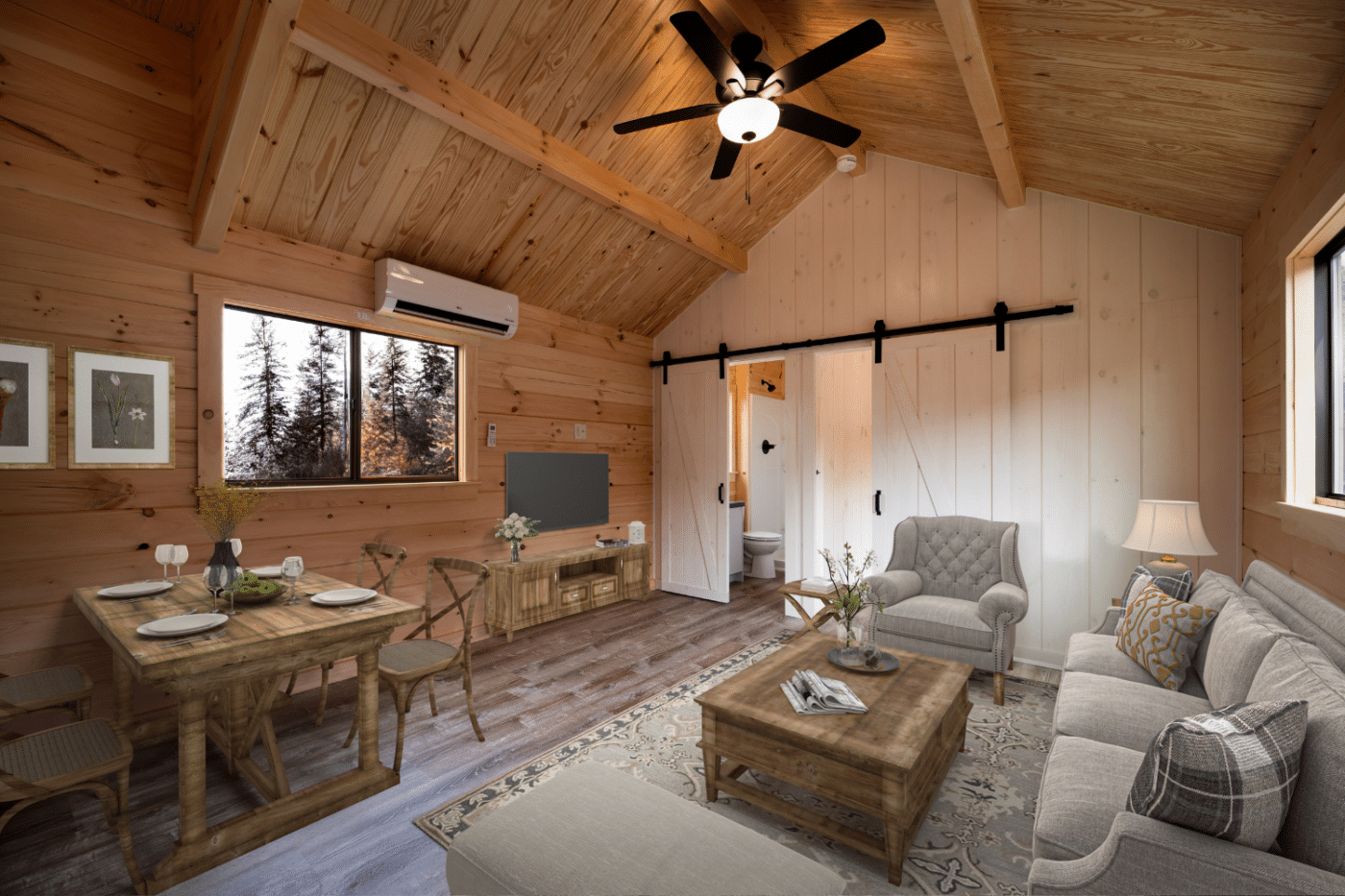
Does Eagle Mountain, UT allow tiny homes?
Yes, Eagle Mountain City, Utah does allow tiny homes under specific state and county regulations. In addition, Eagle Mountain City permits tiny homes on wheels provided they are registered with the Utah DMV, are towable, cannot move under their own power, are no larger than allowed on public highways, have a skirted undercarriage, and contain at least 140 sq ft of first floor interior living space.
Does Moab, UT allow tiny homes?
Yes, Moab, Utah allows tiny houses. Moab abides by the International Residential Code (IRC) and defines tiny homes under a number of categories. A permit is required for construction of tiny houses. Due to the popularity of tiny homes and tourists in Moab, ensure that all local zoning ordinances and land use regulations are followed when planning for and building your tiny home.
Does Ogden, UT allow tiny homes?
Yes, Ogden, Utah does allow tiny homes. The city of Ogden complies with statewide regulations regarding tiny homes and the International Residential Code (IRC). Ogden specifies that all tiny homes, except those within East Central Ogden, must be permanently installed, utility connected, and code compliant. The IRC stipulates that tiny homes are allowed to be 400 sq ft and have a minimum ceiling height of 6’8”.
Does Provo, UT allow tiny homes?
Yes, Provo City does permit tiny houses. Provo City complies with the rules established by the International Residential Code (IRC). A building permit and home inspection is required. Double-check with the local zoning ordinances in your area to ensure your tiny home is in an appropriate location. Reach out to your local zoning and planning department for more information.
Does Salt Lake, UT allow tiny homes?
Yes, Salt Lake City, Utah does allow tiny homes less than 400 square feet so long as they are on a permanent foundation. Salt Lake City does not allow homes without a permanent foundation. Any moveable structure with wheels is considered a recreational vehicle (RV) and can not be used as a living space outside of RV parks. Additionally, construction of any size home must meet all rules and regulations of the zoning district in which they are located.
Does St. George, UT allow tiny homes?
Yes, tiny homes are legal in St. George. The city follows the county and city rules set forth by the International Residential Code (IRC). Washington County allows tiny homes in residential zones so long as they are on foundations and have access to utilities. However, tiny homes on wheels are not allowed on residential lots as St. George classifies these homes as park model recreational vehicles and designates these for recreation and campground areas.
What Counties In Utah Do Not Allow Tiny Homes?
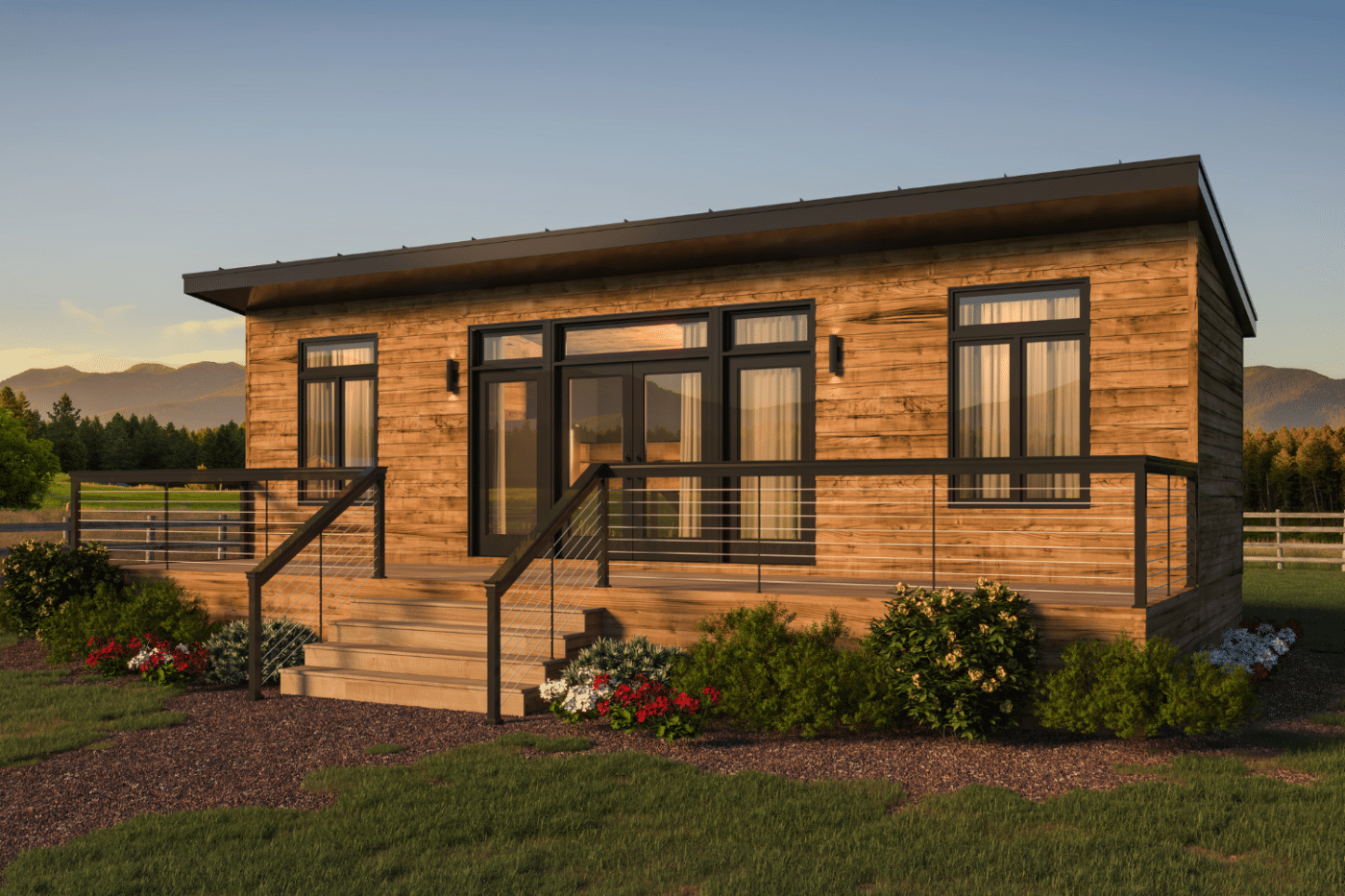
Good news! Tiny homes in Utah are allowed in every county. However, each county and city has its own specifications that tiny houses must meet. For a complete understanding of the rules and regulations for your area, check local town or city zoning and building regulations.
Tiny Homes That Are Allowed In UT
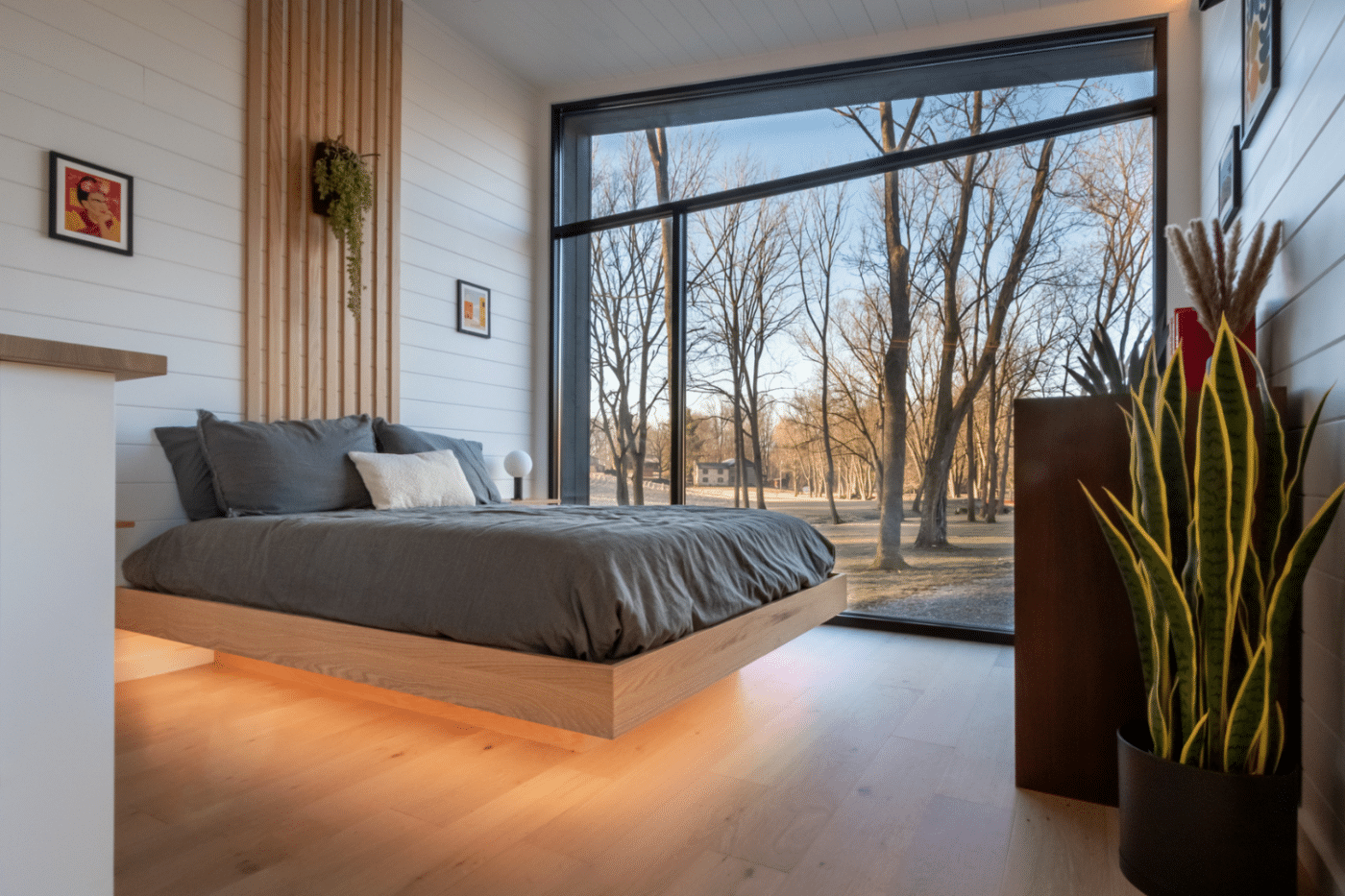
In Utah, the types of tiny homes that are generally allowed include:
- Permanent Tiny Homes are tiny homes that are constructed on a foundation, adhere to local building codes, and are located in specific residential zones. These homes must comply with all safety, zoning, and utility standards.
- Tiny Homes on Wheels (THOWs) are tiny houses built on a trailer with wheels, are often considered recreational vehicles (RVs), and are commonly allowed in RV parks, campgrounds, or specific zoning areas that permit RV living. THOWs are also often referred to as park models.
- Accessory Dwelling Units (ADUs) and Auxiliary Dwelling Units are not permitted as residences in every county in Utah. However, in most counties and cities, they are legal. ADUs refer to additional dwelling areas on the same property as a primary residence. They can be attached to the primary dwelling or separate from the primary dwelling, and some county codes even refer to internal ADUs.
View our Utah park model home styles here!
Park Model Regulations in Utah
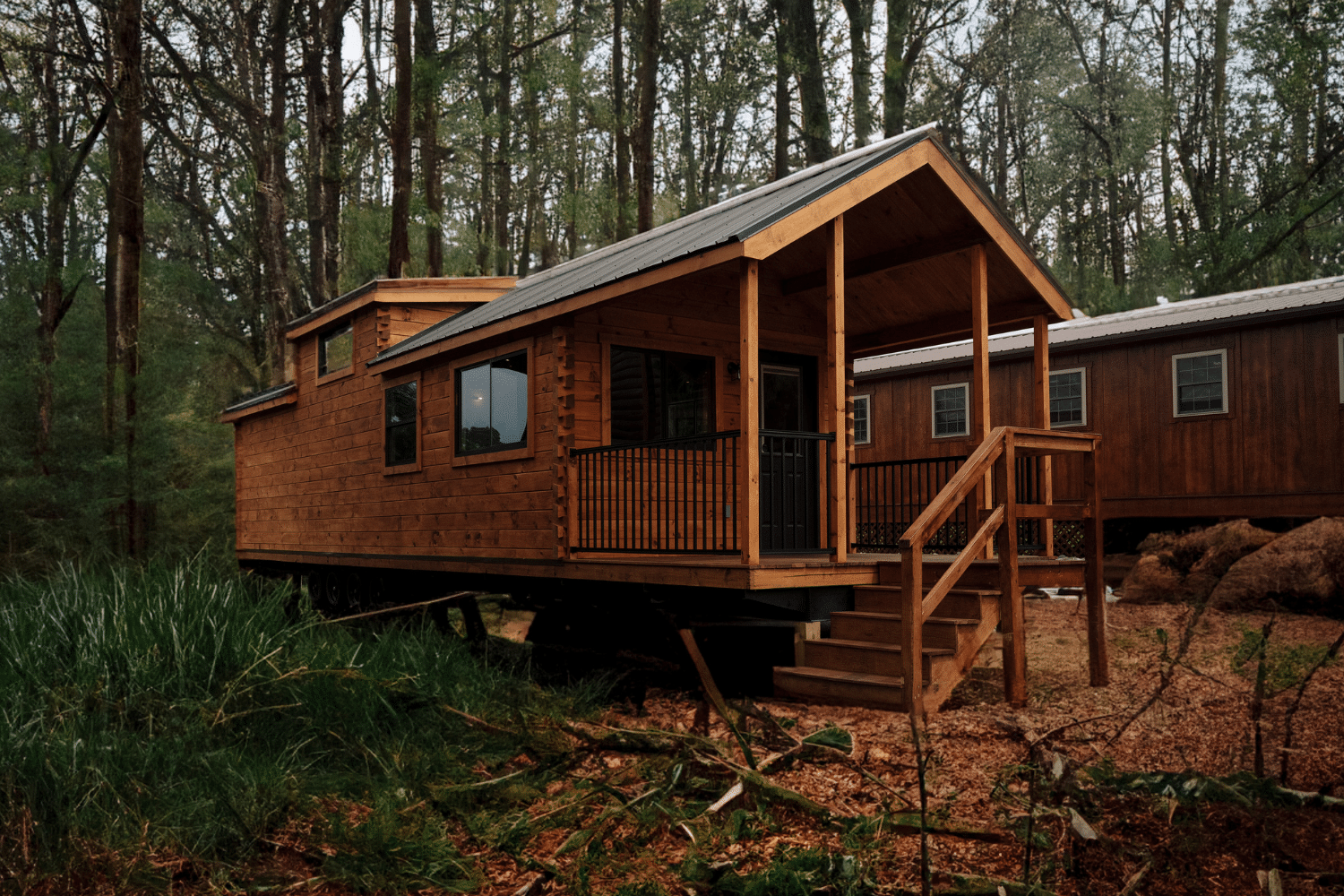
Park model regulations in Utah classify park model homes or tiny homes on wheels as recreational vehicles (RVs). According to park model regulations in Utah they must be registered with the Utah Division of Motor Vehicles. The Utah DMV defines a park model recreational vehicle as a unit built for temporary living quarters for recreational, camping, travel, or seasonal use and not a unit permanently attached to a real property or used for permanent residency. Park model vehicles require a special highway permit for transit and must not exceed 400 square feet.
What are the Rules for tiny homes in utah?
There is currently not one uniform state regulatory code for tiny homes in Utah. Tiny home regulations in Utah vary from county to county and even from city to town. However, as popularity grows, it is realistic to expect legislation to reach tiny homes in Utah. Until then, the International Residential Code and local zoning and building departments determine what rules tiny house builders in Utah must follow.
In General…
According to the Utah Residential Code, tiny homes that are on foundations are classified as permanent residences and, therefore, must follow county-specific building codes. Foundations must support and transfer all loads to the supporting soil, and the property must be graded to send surface runoff to a storm sewer conveyance. Tiny houses on wheels are widely classified as recreational vehicles (RVs), which makes using them as permanent residences more challenging. Some places charge more for tiny houses on wheels that are in permanent use. Accessory dwelling units (ADUs) and auxiliary dwelling buildings are allowed throughout the state, but not every county permits residence in ADUs. Overall, the International Residential Code (IRC) is the adopted standard for residential construction statewide in Utah.
Do you need a permit for a tiny home in Utah?
Yes, in general, most counties in Utah require permits for building or placing a tiny home, accessory dwelling unit, park model home or tiny home on wheels.
Specific requirements for obtaining a permit will vary based on structure and local laws. It is important to check with local zoning or building departments to learn if you need a permit, how you obtain one, and how much it will cost.
Are There Any Tiny Home Communities In Utah?
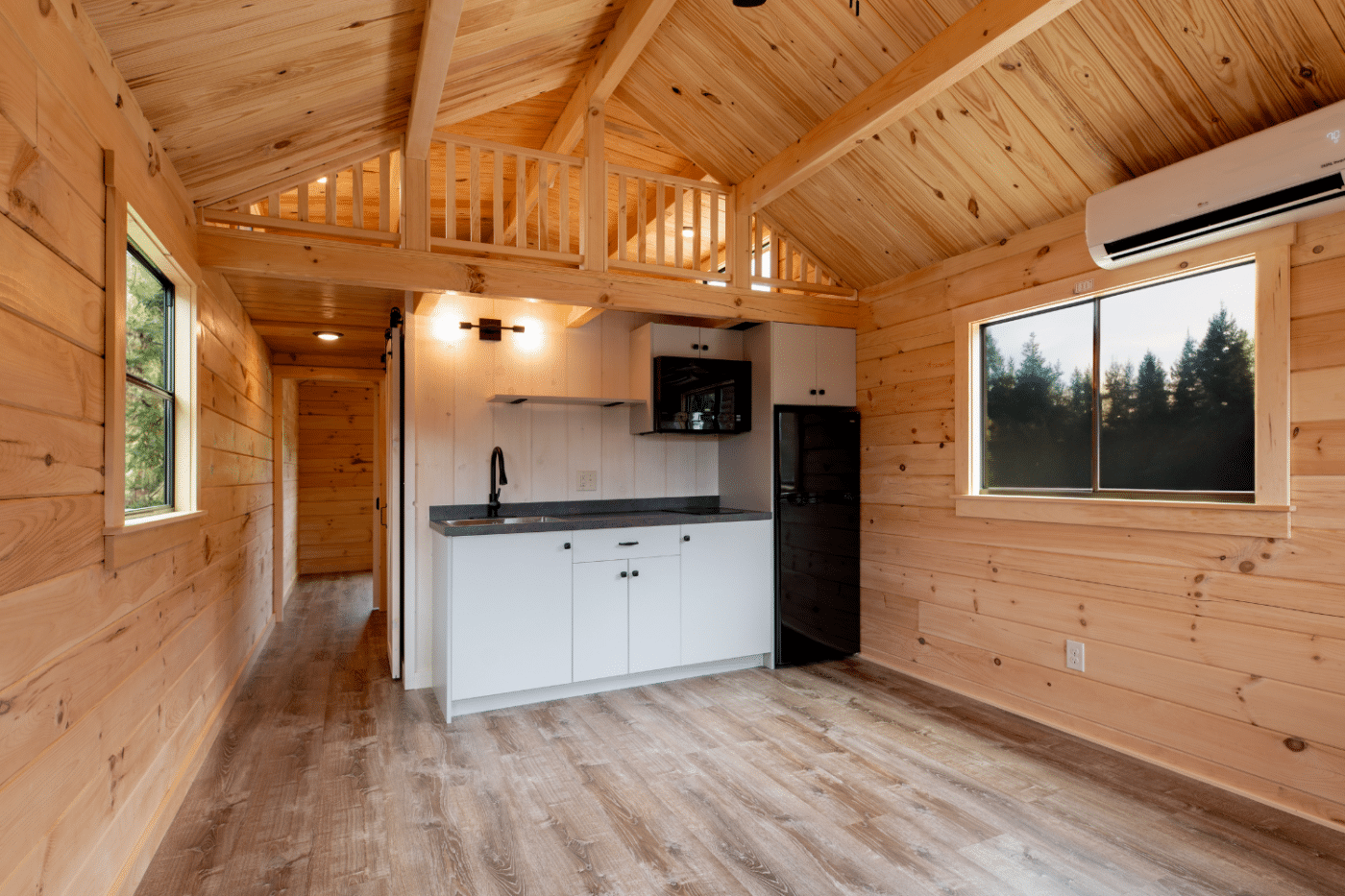
Yes! There are a number of tiny home communities in Utah. Living in tiny home communities provides a number of benefits including additional amenities and support. Below is a list of some of the many tiny home communities in Utah.
OSR Land Co-op at Riverbed Ranch, Riverbed Ranch Rd, UT: This 1,245 acre community is nestled within the mountains of Juab County and aims to be a self-sufficient off-the-grid community. This non-profit land cooperative prioritizes sustainability and encourages tiny living. The community features an RV and camping park, hiking trails, high-speed internet, a co-op store and more!
Wasatch Commons Cohousing, Salt Lake City, UT: The Wasatch Commons Cohousing Community is Utah’s first cohousing community. This small house community in Utah is located ten minutes from downtown Salt Lake City and is built upon the idea of shared community and the creation of ongoing connections with neighbors. Shared facilities include internet, community gardens, a library, workshop, fire pit, gym, and outdoor recreation areas.
Zion’s Tiny Getaway, Apple Valley, UT: Located amidst the beautiful Zion National Park, this Zion tiny home community offers both a peaceful and adventure-filled location. In addition to being about 45 minutes from Zion National Park, the community is two hours from the Grand Canyon and 90 minutes from Bryce Canyon. This community was created to empower tiny home owners in Utah and promote environmental sustainability.
Communities like these provide a variety of options and amenities for those interested in tiny home communities in Utah. In addition, a variety of RV parks and campgrounds throughout the state are viable options for temporary hook-ups in park model homes or tiny houses on wheels.
Frequently Asked Questions About Tiny Home Regulations In Utah
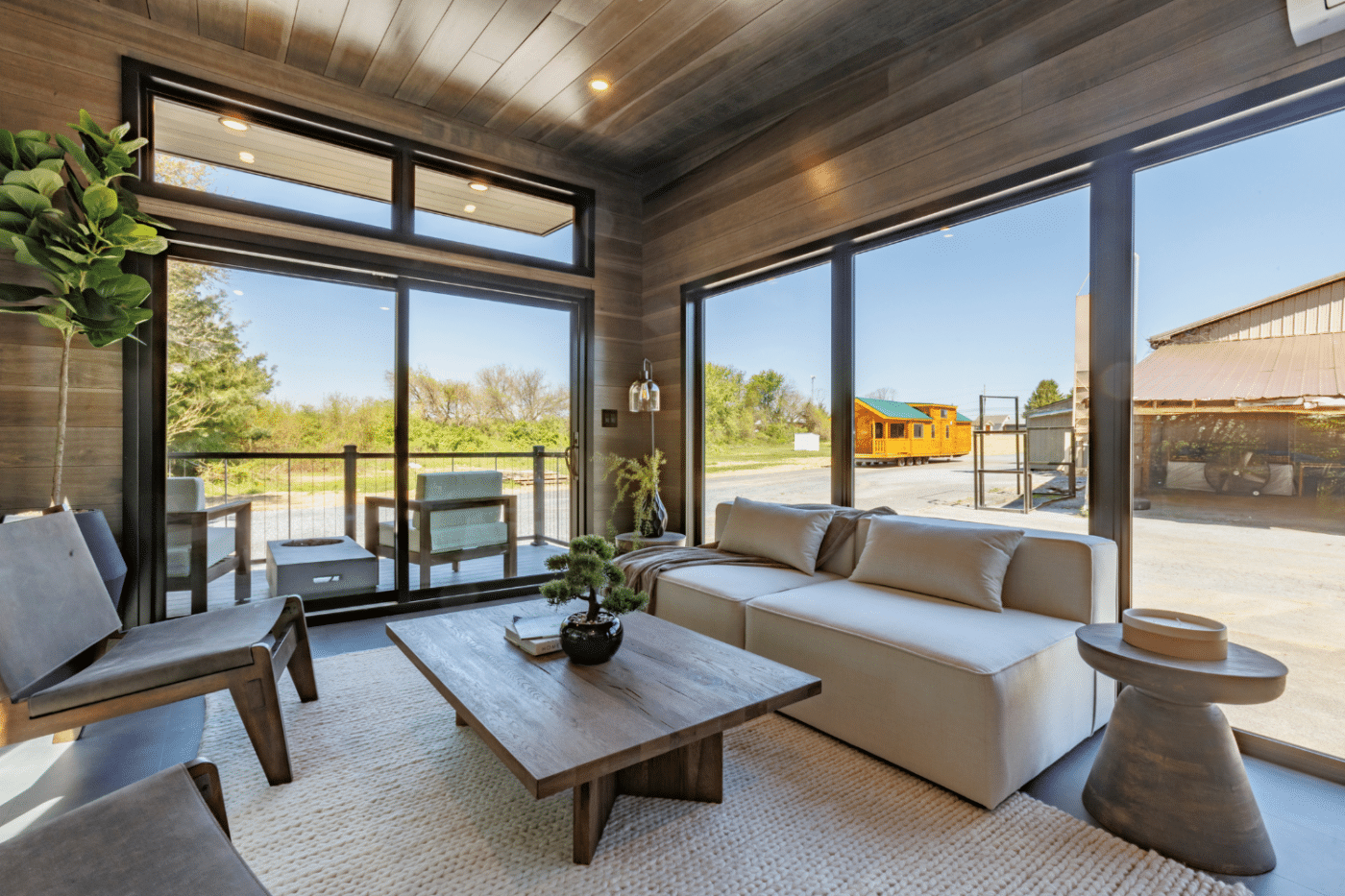
Can I Put a Tiny House on My Property in Utah?
Yes! In many counties throughout Utah tiny houses can be placed on an existing residential lot with a primary building. These “mother-in-law” suites are excellent additions for larger families or those with children who are young adults or those who have aging family members. Additionally, tiny houses can be added to properties for use as vacation rentals to provide supplemental income. Be sure to check with local regulations to ensure that tiny homes are allowed on your property in your area.
How Much Does it Cost to Build a Tiny House in Utah?
In Utah, the prices for tiny homes vary, but a typical range is between $30,000 to $70,000. More modern homes with high-end features will increase the price as well. It is always a good idea to do your research before you buy a tiny house. Check local tiny homes for sale in your area to gauge a realistic price. If you are looking for more in-depth pricing options check out this article which offers a cost breakdown of one of our park model homes! Or, reach out to Zook Cabins to request a free quote on a tiny home today!
How Small Does a House Have to Be to Be Considered a Tiny Home?
The International Residential Code defines tiny homes as homes that are 400 sq ft or less, excluding lofts. Zook features park models as small as 204 sq ft all the way up to 400 sq ft. Counties in Utah refer to tiny homes in their residential code as being as large as 800 – 1000 sq ft. However, in most cases, the average size of a tiny house is less than 400 sq ft.
What Counties in UT allow Tiny Homes?
Tiny homes in Utah are legal, which means that every county in Utah allows some form of tiny house. Utah provides general guidelines for tiny homes statewide, mostly based on the Internal Residential Code. However, each county has its own specific set of building codes for all structures, including tiny homes. It’s a good idea to check local regulations for tiny homes while planning.
Does a Tiny Home Add Value to Property?
The short answer is: it depends! Tiny homes on wheels do not appreciate value over time as they are more similar to an RV. Tiny homes on foundations could add value to your property if they are placed on land you already own. This potential value depends on the structure and the potential appreciation of the land. Lastly, tiny homes can add value as they are often used as vacation rentals such as Airbnbs and can generate additional income. This might be an especially lucrative option in a state such as Utah, which has an abundance of natural beauty and parks.
Are There New Tiny Home Regulations in Utah?
Tiny home regulations in Utah have yet to respond to the tiny home trends nationwide. However, tiny homes exist in abundance throughout the state. Each county, city, or town has its own rules and regulations regarding tiny home builders. In general, all dwellings in Utah must follow the adopted International Residential Code (IRC) and be a minimum of 400 sq ft (as well as other height and safety regulations). If on wheels, tiny homes are classified as recreational vehicles (RVs) and must follow RV regulations and road width rules.
Which State is Most Tiny Home Friendly?
Many people throughout the US are embracing tiny living and, therefore, many areas nationwide are friendly towards tiny home dwellers. Zook Cabins delivers cabins in every state in the United States except Alaska and Hawaii! There are many factors to consider when determining which state is best for tiny houses. Legality, climate, building regulations, soil type, and cost of living, among others, are all important factors. Utah is tiny home-friendly, and tiny homes are legal in Utah. However, tiny home regulations in Utah vary across counties and cities. Utah also boasts a number of beautiful and unique state and national parks, which makes tiny living appealing to some. Business Insider ranks Utah as 10th in the nation for most popular US states for tiny living.
What do other states require for tiny homes?
Each state creates its own laws to govern tiny living. However, at Zook Cabins, we have created a regulation guide for every state that we deliver to. Take a look at the list below and see what state is best for your tiny living lifestyle.
